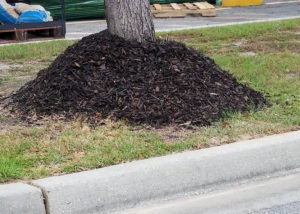
When it comes to planting a tree there is a lot of information flying around – and not all of it is accurate! Here are some common myths:
Depth is the most important factor when digging the hole for a tree
Not quite. Planting a tree too deep or too shallow can actually wind up killing the tree. An easy tip to remember how deep a hole should be: Remove the tree from either its container or from the burlap and wire and then measure the distance from the root flare (where the roots join the trunk) to the bottom of the root-ball and dig the hole to that depth. It’s also important to make sure the hole is 2-3 times the size of the root ball measurement. That ensures the tree has adequate space to establish its root system. If the base of your tree looks like a telephone pole in the ground…you may have a problem.
Once you take a tree out of its casing, it is good to plant
The roots need a little love. Before placing the tree in the hole, look at the root ball and be sure to break any circling roots – these could end up strangling the tree. You want tree roots to fan out as they grow, not encircle the tree. Don’t worry if some soil falls off – it’ll help free the roots.
The more soil around the base of the tree, the better
Nope. The root flare has been described as the heart of the tree. It’s where the trunk meets the supporting roots of the tree in an often wide and flared manner. When this is planted too deep in soil or mulch, the tree can develop girdling roots and end up strangling itself. It’s critical to check that this root flare level with the original grade of the planting space. Set your tree up for success!

Mulching in a triangular shape around the trunk protects the tree and looks nice
Ah, the dreaded mulch volcano. Piling mulch high around the base and trunk of the tree causes a few bad things to happen, namely bark decay and root circling. Mulch is by no means a bad idea. It has many beneficial qualities, but like everything else in life, it should be used in moderation. We prefer the 3-3-3 rule: 3 inches of mulch in a 3-foot ring with a 3-inch space around the tree trunk.
Since there was a lot of root loss when a tree was containerized, you should prune the tree’s crown heavily to compensate.
Balancing your tree’s crown is a great thing to do once your tree is established, but you don’t need to do it while planting. It can actually hurt the tree at this stage. Roots are pruned pretty severely to get trees into containers, and matching the crown only makes it harder for the tree to produce the energy it needs (through its leaves) to adjust to its new environment. Limit pruning at the time of planting to structural training and the removal of damaged branches.

